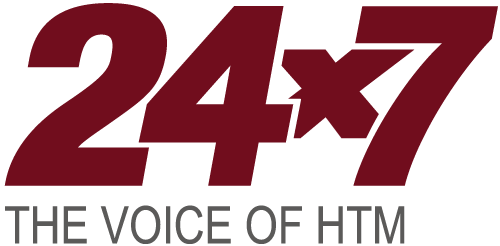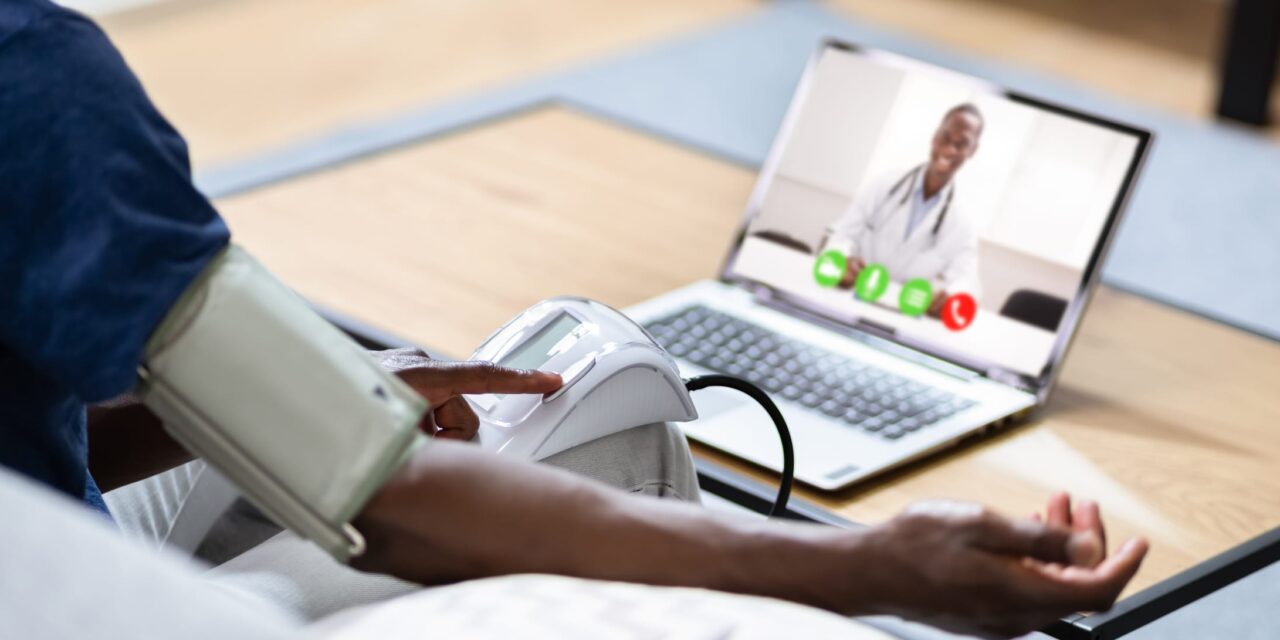Supporting telehealth means managing devices and data far beyond the hospital walls.
By Pat Munsey
Telehealth may no longer be at its pandemic-era peak, but it has become a core part of modern care delivery. Utilization remains high, with some states’ adoption rates reaching as high as 90%, and hospitals continue investing heavily in virtual care programs and remote patient monitoring.1
“Telehealth is not the future; it’s current,” says Yadin David, EdD, founder of Biomedical Engineering Consultants, LLC. “It’s acceptable, and everybody wants to try a different flavor, using technology to extend patient services.”
For healthcare technology management (HTM) professionals, this shift is changing the scope of their responsibilities. Supporting telehealth requires maintaining devices beyond hospital walls, managing connectivity across diverse environments, and helping secure sensitive patient data transmitted across multiple platforms.
“Patients need continuous care, not only in the hours or days they are in the hospital,” says David. “They are going to be connected to technological systems that you, as healthcare technology managers, are responsible for.”
Supporting an Expanding Technology Ecosystem
Todd Cornell, MedWand Solutions CEO and president, has watched telehealth evolve from basic video consultations to tools capable of comprehensive patient exams. “Technology to support telehealth has made significant advancements over the last few years, enabling much more comprehensive patient visits and examinations to be done remotely,” he says.
Cornell explains that platforms like MedWand, a US Food and Drug Administration-cleared telehealth examination solution, allow hospitals to use care team resources more flexibly, enabling initial assessments by nurses, medical assistants, or technicians before virtually involving a physician as needed. That flexibility is becoming increasingly critical as the US faces a projected shortage of up to 86,000 physicians by 2036, making technologies that extend provider reach essential for maintaining access to care.2
These advancements translate into managing a wider range of interconnected devices, from hospital-based virtual care carts to blood pressure cuffs and monitoring equipment installed in patients’ homes. “That technology consists of many different types of devices and connecting elements,” says David.
Cornell adds that supporting this new technology mix often requires hospitals to rethink their workflows. Devices vary by software, integration capabilities, and staffing needs, which means close coordination with manufacturers and vendors is key. Choosing devices with built-in diagnostic tools, remote monitoring capabilities, and strong manufacturer support can help identify issues faster, streamline troubleshooting, and reduce downtime, says Cornell.
Cornell notes that many technologies incorporate user videos and troubleshooting guides as part of the software platform. “It is very important that the companies manufacturing these technologies are resources that support their customers in the use of the technology,” he says.
Infrastructure and Connectivity Challenges
Reliable infrastructure remains a critical factor in telehealth’s success, and not every location has the connectivity needed to support these technologies. David notes that gaps are especially significant in rural areas. According to the Federal Communications Commission, more than 22.3% of Americans in rural areas lack access to adequate broadband compared to 1.5% in urban areas.3
These connectivity gaps have a direct impact on how telehealth is delivered. A 2021 report from the Office of the Assistant Secretary for Planning and Evaluation found that 56.5% of surveyed Medicare beneficiaries aged 65 and older used audio-only telehealth visits rather than video-based ones, often because they lacked a smartphone, computer, or reliable high-speed internet.4 This means supporting devices in environments where bandwidth constraints and technology access can limit functionality and require additional troubleshooting strategies.
“If a service is extended beyond your brick-and-mortar facility in rural America, healthcare technology managers need to be familiar with those limitations and challenges,” says David. “Data transactions can be compressed or limited. This sometimes can lead to an error because not all the data is present or is exposed to other interference.”
David adds that supporting telehealth often requires coordinating with patients and families when troubleshooting device or connectivity issues. Clear communication in these situations can help resolve problems more efficiently and keep care on track.
“The environment is not as stable as inside the facility,” says David. “You need to be able to troubleshoot the causes of poor performance. And the ability to talk to family and patient as you perform this type of service is major because most of us engineers and technicians did not go through training on how to talk to customers. That needs to be not taken for granted.”
Cybersecurity Challenges and Emerging Solutions
In January, the Department of Health and Human Services’ Health Sector Cybersecurity Coordination Center (HC3) issued an analyst note detailing challenges and solutions for securing telehealth..5
The note emphasizes that telehealth platforms can broaden the potential points of exposure for healthcare organizations, making it essential to secure both the platforms and the connected devices that support them. Potential threats include data breaches, phishing, ransomware, session hijacking, and denial-of-service attacks.
“As health care providers integrate telehealth platforms to better serve patients remotely and improve patient outcomes, especially for patients in rural or underserved areas, cyber adversaries consider these platforms an extension of a provider’s ‘attack surface,’” says John Riggi, American Hospital Association national advisor for cybersecurity and risk, in a release. “If not properly secured and network segmented, the telehealth platform’s technical infrastructure may be visible and accessible on the internet and provide access to a provider’s main networks.”
The analyst note recommends measures such as adopting zero-trust architecture, implementing multi-factor authentication, applying regular software and firmware updates, and using data encryption for information both in transit and at rest. Training for both providers and patients is also highlighted as a key step to reduce human error and strengthen overall security.
An Eye on the Future
Telehealth has evolved rapidly in the last 30 years, and the pace of change is accelerating. Already, David is seeing new changes take shape in the form of artificial intelligence (AI).
“Collaborative intelligence, I believe, will be one of the things that will come in the next few years,” says David. “Taking the medical professional expertise together with AI’s ability to provide us additional information would add to an overall intelligence that could create a significant amount of new data. It could allow us to have predictive and key indicators that there is something wrong that we can do something about in the early stages.”
David says now is the time to take a more active role in shaping telehealth’s future. From influencing emerging regulations to helping define new industry standards, decisions made today will affect how connected care evolves in the decades ahead.
“I think the FDA will come up with new regulatory requirements, and industry and other professional organizations will come up with new standards and best practices. We should not sit on the sidelines waiting for somebody to tell us. HTM professionals should turn that around and get more engaged,” David says.
ID 227264209 © Andrey Popov | Dreamstime.com
References
- Definitive Healthcare. Hospital telehealth adoption by state. Healthcare Insights. 2024 Feb 12. Available at https://www.definitivehc.com/resources/healthcare-insights/hospital-telehealth-adoption-by-state
- Association of American Medical Colleges. The complexities of physician supply and demand: Projections from 2021 to 2036. 2024 March 21. Available at https://www.aamc.org/media/75236/download?attachment.
- Federal Communications Commission. 2020 broadband deployment report. 2020 April 24. Available at https://docs.fcc.gov/public/attachments/FCC-20-50A1.pdf
- Karimi M, Lee EC, Couture SJ, et al. National survey trends in telehealth use in 2021: Disparities in utilization and audio vs video services. Office of the Assistant Secretary for Planning and Evaluation, US Department of Health and Human Services. 2022 February. Available at https://aspe.hhs.gov/sites/default/files/documents/4e1853c0b4885112b2994680a58af9ed/telehealth-hps-ib.pdf
- 5. US Department of Health and Human Services, Health Sector Cybersecurity Coordination Center (HC3). Securing Telehealth: Challenges and Solutions – HC3 Analyst Note. 2025 Jan 2025. Available at https://www.aha.org/system/files/media/file/2025/01/hc3-analyst-note-tlp-clear-securing-telehealth-challenges-and-solutions-january-8-2025.pdf





